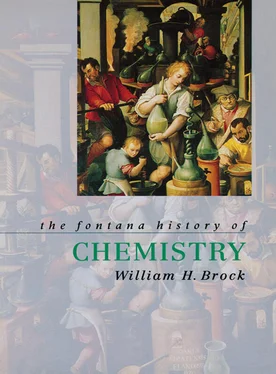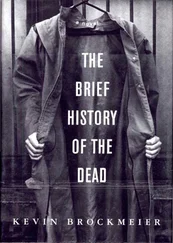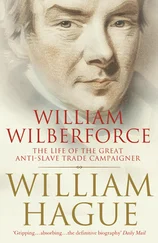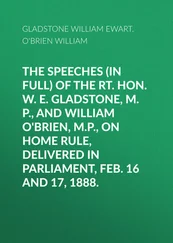Dalton’s apparent dilatoriness is easily explained by the fact that he earned his living as a private elementary teacher, which left him little time for the exacting experimental work and evidence upon which he based the New System. For it was a ‘new’ approach that he was taking, familiar though his scheme has become. Dalton recognized his innovation as being a ‘doctrine of heat and general principles of chemical synthesis’. A theory of mixed gases, which he developed in 1802, led him in 1803 to ‘new views’ on heat as a factor in the way elements (or, rather, atoms) combined together, a process he referred to as ‘chemical synthesis’. The fact that chemical compounds, or compound atoms (molecules), might be binary, ternary, quaternary, and so on up to a maximum of twelve atoms, gave Dalton a structure for his text: a detailed experimental examination of heat and the gaseous state, a theory of atomism and combination, which included the measure of atomic mass as a relative atomic weight, followed by a detailed account of the properties of the known elements, their binary combinations, ternary combinations and so on. Thus, although the exegesis of the atomic theory was limited to five pages, the whole of the New System was, in fact, imbued with a new stoichiometric approach to chemistry – that elements compounded together in fixed proportions by weight because of attractions and repulsions between the tiny particles of heat and elementary forms that made up laboratory chemicals. Inevitably, because Dalton was a slow worker and unable to spare time from teaching for research and writing, it was left largely to others, notably Thomas Thomson and Jacob Berzelius, to exploit the full consequences of Dalton’s insight.
John Dalton (1766–1844) was born at Eaglesfield in Cumbria, the son of a weaver, and, like most contemporary members of the Society of Friends, was a man of some learning. The highly efficient Quaker network of schooling and informal education ensured that Dalton received a good schooling; he himself began to teach village schoolchildren when he reached the age of twelve. In his teens he mastered sufficient geometry to be able to study Newton’s Principia. At the age of fifteen, Dalton and his brother moved to Kendall, in the English Lake District, where they acquired their own school, which offered Greek, Latin, French and mathematics. At Kendall, Dalton was befriended by the blind Quaker scholar, John Gough, who further encouraged Dalton’s mathematical abilities and knowledge of Newtonian natural philosophy, including the work of Boyle and Boerhaave. The constant stimulation of rapidly changing weather conditions among the mountains and lakes of Westmorland and Cumberland (present-day Cumbria) interested him in meteorology. The records he kept over a five-year period were published in Meteorological Essays in 1793. In the same year, on Gough’s recommendation, Dalton moved to Manchester as tutor in mathematics and natural philosophy at New College, a Dissenting academy that had begun its distinguished life elsewhere as the Warrington Academy. Here Priestley had taught between 1761 and 1767.
Although Manchester New College moved to York in 1803, Dalton, finding Manchester congenial, spent the remainder of his life there as a private teacher and industrial consultant. Not only was there an abundance of paid work in Manchester for private tutors because of a rising industrial middle class (Dalton’s most famous pupil was a brewer’s son, the physicist James Prescott Joule), but the presence of the Literary and Philosophical Society, whose Secretary Dalton became in 1800 and President from 1817 until his death, proved a congenial venue for the presentation and articulation of his scientific work. Dalton read his first scientific paper, on self-diagnosed colour blindness (long after known as Daltonism) to the Society in 1794. He went on reading papers and reports to the Society up to his death. From about 1815 onwards, however, Dalton failed more and more to keep pace with the chemical literature. In 1839 he suffered the ignominy of having a paper of his on phosphates and arsenates rejected by the Royal Society on the grounds that a superior account of these salts had already been published by Thomas Graham.
Despite such failings, Dalton retained the respect of the chemical and scientific communities. Together with two other Dissenters from Anglicanism, Michael Faraday and Robert Brown, the botanist, and despite the angry opposition of Oxford High Churchmen, Dalton was awarded an honorary degree by Oxford University in 1832. A year later the government awarded him a Civil List pension for life, and in 1834 Edinburgh University gave him another honorary degree. His final accolade was a public funeral in Manchester. Even if we grant that some of these honours served a secondary purpose of drawing attention to scientists and their contribution to culture in Victorian Britain, we are bound to ask: What did Dalton do to merit such public honours?
The straightforward answer is that Dalton rendered intelligible the many hundreds of quantitative analyses of substances that were recorded in the chemical literature and that he provided a model for the long-standing assumption made by chemists that compounds were formed from the combination of constant amounts of their constituents. He regarded chemical reactions as the reshuffling of atoms into new clusters (or molecules), these atoms and compound atoms being pictured in a homely way as little solid balls surrounded by a variable atmosphere of heat.
This statement, however, tells us little about Dalton’s originality; after all, the atomic theory of matter had existed for a good two-thousand years before Dalton’s birth. In Ireland, at the end of the eighteenth century, William Higgins (1762–1825) had used atomism in his A Comparative View of the Phlogiston and Antiphlogiston Theories (1789) to refute the phlogistic views of his countryman, Richard Kirwan. Higgins later claimed that Dalton had stolen his ideas – an inherently implausible notion that, nevertheless, has been supported by several historians in the past. In fact, Dalton’s originality lay in solving the problem of what philosophers of science have called transduction ; he derived a way of calculating the relative weights of the ultimate particles of matter from observations and measurements that were feasible in the laboratory. Although atomic particles could never be individually weighed or seen or touched, Dalton provided a ‘calculus of chemical measurement’ that for the first time in history married the theory of atoms with tangible reality. He had transduced what had hitherto been a theoretical entity by building a bridge between experimental data and hypothetical atoms.
Dalton’s calculus involved four basic, but reasonable, assumptions. First, it was supposed that all matter was composed of solid and indivisible atoms. Unlike Newton’s and Priestley’s particles, Dalton’s atoms contained no inner spaces. They were completely incompressible. On the other hand, recognizing the plausibility of Lavoisier’s caloric model of changes of phase, Dalton supposed that atoms were surrounded by an atmosphere of heat, the quantity of which differed according to the solid, liquid or gaseous phase of the aggregate of atoms. A gas, for example, possessed a larger atmosphere of heat than the same matter in the solid state. Secondly, Dalton assumed, as generations of analysts before him had done, that substances (and hence their atoms) were indestructible and preserved their identities in all chemical reactions. If this law of conservation of mass and of the elements was not assumed, of course, transmutation would be possible and chemists would return to the dark days of alchemy. Thirdly, in view of Lavoisier’s operational definition of elements, Dalton assumed that there were as many different kinds of atoms as there were elements. Unlike Boyle and Newton, for Dalton there was not one primary, homogeneous ‘stuff’; rather, particles of hydrogen differed from particles of oxygen and all the particles that had so far been defined as elementary.
Читать дальше












